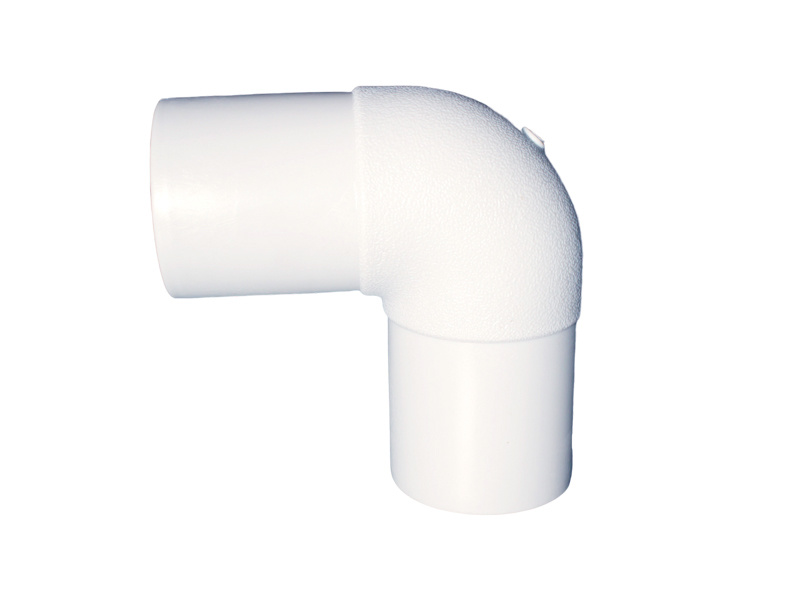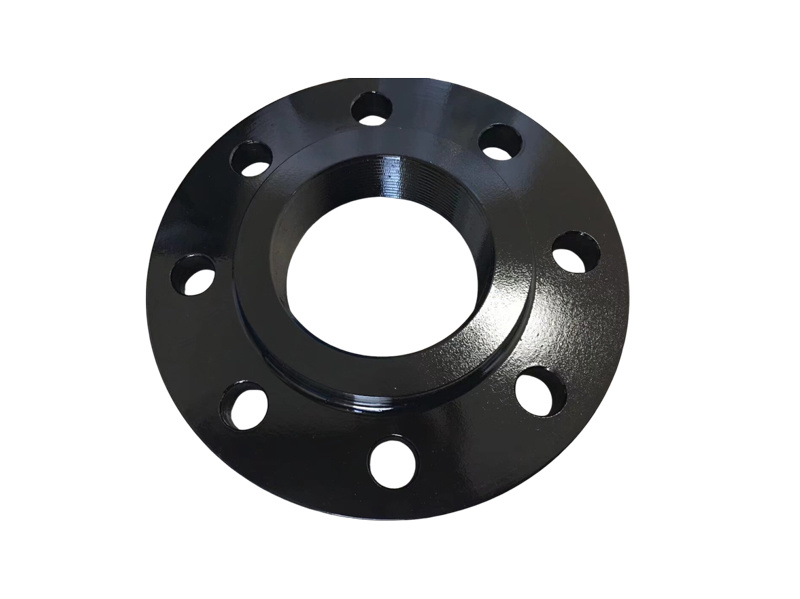-
Comparing Cost-Effectiveness of Different Concentric Reducer Fittings: A Comprehensive Analysis
Date:
10 Jul,2025
Comparing Cost-Effectiveness of Different Concentric Reducer Fittings Table of Contents 1. Introduction to Concentric Reducer Fittings 2. Understanding Cost-Effectiveness in Construction Materials 3. Types of Concentric Reducer Fittings and Their Applications 3.1 PVC Concentric Reducers 3.2 Metal Concentric Reducers 3.3 Stainless Steel Concentric Reducers 4. Factors Influencing the Cost of Concent
Comparing Cost-Effectiveness of Different Concentric Reducer Fittings
Table of Contents
1. Introduction to Concentric Reducer Fittings
2. Understanding Cost-Effectiveness in Construction Materials
3. Types of Concentric Reducer Fittings and Their Applications
3.1 PVC Concentric Reducers
3.2 Metal Concentric Reducers
3.3 Stainless Steel Concentric Reducers
4. Factors Influencing the Cost of Concentric Reducer Fittings
4.1 Material Quality and Durability
4.2 Manufacturing Processes
4.3 Market Demand and Supply
5. Cost-Effectiveness Analysis of Different Fittings
5.1 Lifecycle Cost Analysis
5.2 Performance vs. Price
6. Best Practices for Selecting Concentric Reducer Fittings
7. Frequently Asked Questions (FAQs)
8. Conclusion
1. Introduction to Concentric Reducer Fittings
Concentric reducer fittings are essential components in various piping systems, allowing the transition of pipe diameters while maintaining a consistent flow direction. These fittings are particularly crucial in industries where the efficient transport of fluids is paramount. Understanding the nuances of concentric reducer fittings can significantly impact project success and cost management.
2. Understanding Cost-Effectiveness in Construction Materials
Cost-effectiveness is a critical consideration when selecting materials for construction projects. It refers to the balance between the price of materials and their performance, durability, and maintenance requirements. In the context of concentric reducer fittings, a thorough evaluation of these factors helps determine which option provides the best value over the long term.
3. Types of Concentric Reducer Fittings and Their Applications
There are several types of concentric reducer fittings, each suited for specific applications and environments. Understanding these variations is vital for making informed purchasing decisions.
3.1 PVC Concentric Reducers
PVC concentric reducers are widely used in residential and commercial plumbing. They are lightweight, corrosion-resistant, and cost-effective, making them an attractive option for projects with budget constraints. Their ease of installation and longevity further enhance their cost-effectiveness.
3.2 Metal Concentric Reducers
Metal concentric reducers, including those made of copper and carbon steel, offer enhanced strength and durability. These fittings are ideal for high-pressure systems but typically come at a higher initial cost. When evaluating metal options, consider the long-term benefits of durability and reduced maintenance needs.
3.3 Stainless Steel Concentric Reducers
Stainless steel concentric reducers are known for their resistance to corrosion and extreme temperatures. They are perfect for industries that require sanitation and longevity, such as food and beverage processing. While their upfront costs are higher, their durability can lead to lower lifecycle costs.
4. Factors Influencing the Cost of Concentric Reducer Fittings
Multiple factors impact the cost of concentric reducer fittings, which should be thoroughly analyzed to ensure you make a well-informed decision.
4.1 Material Quality and Durability
Higher quality materials often result in increased costs. However, investing in durable fittings can lead to significant savings in maintenance and replacement costs over time.
4.2 Manufacturing Processes
The manufacturing process also affects costs. Advanced technologies and precision manufacturing typically lead to higher-quality fittings, which can justify their price points.
4.3 Market Demand and Supply
Market trends significantly influence prices. A surge in demand for certain materials can lead to increased costs, making it essential to stay informed about current market conditions.
5. Cost-Effectiveness Analysis of Different Fittings
Conducting a thorough cost-effectiveness analysis involves examining lifecycle costs, initial purchase price, and performance metrics.
5.1 Lifecycle Cost Analysis
Lifecycle cost analysis (LCA) provides insights into the total costs associated with a fitting over its useful life. This includes installation, maintenance, and potential replacement costs. By considering LCA, you can better understand which concentric reducer fittings offer long-term savings.
5.2 Performance vs. Price
When selecting fittings, it's crucial to balance performance and price. Higher-priced fittings may offer better performance and longevity, potentially making them more cost-effective in the long run compared to cheaper alternatives that require frequent replacement.
6. Best Practices for Selecting Concentric Reducer Fittings
To ensure that you select the most cost-effective concentric reducer fittings for your project, consider the following best practices:
1. **Assess Your Project Needs:** Understand the specific requirements of your piping system, including flow rates and pressures.
2. **Evaluate Material Options:** Consider the pros and cons of different materials based on your project environment.
3. **Conduct a Cost-Benefit Analysis:** Analyze the initial costs against potential long-term savings to make an informed choice.
4. **Consult Industry Experts:** When in doubt, seek advice from professionals who can provide insights based on experience.
7. Frequently Asked Questions (FAQs)
What is a concentric reducer fitting?
A concentric reducer fitting is a plumbing component that connects two pipes of different diameters while maintaining a consistent flow direction.
What are the benefits of using PVC concentric reducers?
PVC concentric reducers are lightweight, resistant to corrosion, and affordable, making them an excellent choice for various applications.
How do I determine the right size of concentric reducer fitting?
To determine the right size, assess the pipe diameters involved in your project and select a fitting that matches these specifications.
Are metal concentric reducers worth the investment?
Yes, metal concentric reducers often provide enhanced durability and performance, which can lead to cost savings in the long run through reduced maintenance and replacement needs.
What factors should I consider when comparing concentric reducer fittings?
Key factors include material quality, cost, expected lifespan, and the specific requirements of your project.
8. Conclusion
In conclusion, understanding the cost-effectiveness of different concentric reducer fittings is essential for making informed decisions in construction and plumbing projects. By evaluating the types of fittings available, considering the factors that influence their costs, and applying best practices for selection, you can achieve both quality and affordability. Whether you choose PVC, metal, or stainless steel fittings, the right choice will align with your project requirements and budget considerations, ultimately leading to successful outcomes in your endeavors.Related News
11 Jul,2025
Understanding Butt Weld Elbows: Essential Components for Your Construction Projects
Butt weld elbows are crucial components used in piping systems to facilitate changes in direction. These fittings are designed to create a seamless transition between two sections of pipe, allowing for smooth flow and reducing the risk of turbulence. By welding the elbow directly to the pipe, these fittings provide a strong and durable connection that can withstand high pressures and temperatures,
10 Jul,2025
Comparing Cost-Effectiveness of Different Concentric Reducer Fittings: A Comprehensive Analysis
Comparing Cost-Effectiveness of Different Concentric Reducer Fittings Table of Contents 1. Introduction to Concentric Reducer Fittings 2. Understanding Cost-Effectiveness in Construction Materials 3. Types of Concentric Reducer Fittings and Their Applications 3.1 PVC Concentric Reducers 3.2 Metal Concentric Reducers 3.3 Stainless Steel Concentric Reducers 4. Factors Influencing the Cost of Concent
09 Jul,2025
Understanding DIN Weld Neck Flange PN40: A Key Component in Pipe Systems
In the realm of construction and decorative materials, the DIN weld neck flange PN40 is a vital component widely utilized in piping systems. Understanding its design and function can significantly enhance the efficiency and safety of any installation. The DIN (Deutsches Institut für Normung) standard establishes guidelines for the manufacturing and testing of flanges, ensuring consistency and rel
Contact information
Address: North Ring Industrial Zone, Mengcun County
Telephone: 86 0317- 6729218 86 0317-6727320
Fax: 0317-6727310
mobile phone: 86 13833761688whatsapp: 86-13780271039
Email: shengyuanflange@163.comLeave Message










